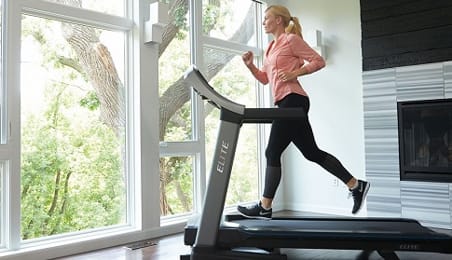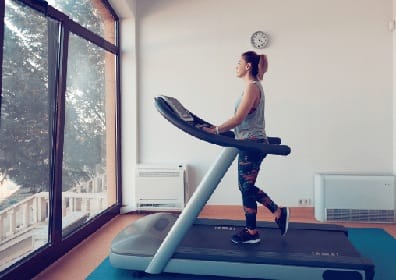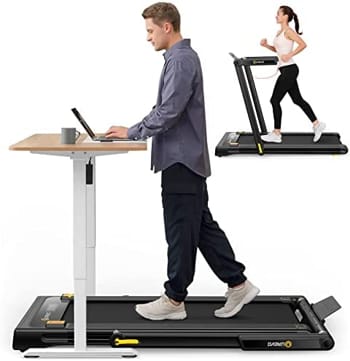
When it comes to getting in shape and improving cardiovascular health, both running and walking on a treadmill can be effective exercises. However, which one is better for you depends on your individual fitness goals, physical condition, and personal preferences. In this article, we’ll explore the differences between running and walking on a treadmill, the benefits and drawbacks of each, and how to choose the right one for your fitness routine.
Contents
Running On A Treadmill

Running on a treadmill is a high-impact exercise that requires a certain level of physical fitness and endurance. Here are some of the benefits and drawbacks of running on a treadmill:
Benefits of Running on a Treadmill
- Burns more calories: Running on a treadmill burns more calories per minute than walking, making it a more efficient exercise for weight loss.
- Improves cardiovascular health: Running on a treadmill can increase your heart rate and help improve your cardiovascular health by strengthening your heart and lungs.
- Builds leg muscles: Running on a treadmill engages more muscles in your legs, including your quadriceps, hamstrings, and calves, which can help build strength and tone.
Drawbacks of Running on a Treadmill
- High impact: Running on a treadmill can be hard on your joints, especially if you have a history of joint pain or injuries.
- Requires more effort: Running on a treadmill requires more effort and energy than walking, which can make it more challenging and less enjoyable for some people.
- Risk of injury: Running on a treadmill at a high speed or with poor form can increase the risk of injury, such as shin splints, stress fractures, or sprains.
Walking On A Treadmill

Walking on a treadmill is a low-impact exercise that is suitable for people of all fitness levels and ages. Here are some of the benefits and drawbacks of walking on a treadmill:
Benefits of Walking on a Treadmill
- Low impact: Walking on a treadmill is a low-impact exercise that puts less stress on your joints than running, making it a safer and more comfortable option for people with arthritis, back pain, or other joint issues.
- Easy to do: Walking on a treadmill is easy to do and requires minimal coordination or athletic ability, making it accessible to beginners or people who are new to exercise.
- Improves mental health: Walking on a treadmill can improve your mood, reduce stress, and boost your energy levels by releasing endorphins, the feel-good chemicals in your brain.
Drawbacks of Walking on a Treadmill
- Less efficient: Walking on a treadmill burns fewer calories per minute than running, which means you may need to walk for longer periods to achieve the same weight loss results as running.
- Less intense: Walking on a treadmill is less intense than running, which may not provide enough cardiovascular stimulation for people who are already fit or active.
- May be boring: Walking on a treadmill can be monotonous and repetitive, which can make it less engaging and less enjoyable for some people.
How To Choose The Right One
Choosing between running and walking on a treadmill depends on your fitness goals, physical condition, and personal preferences. Here are some factors to consider:
Fitness Goals
- Weight loss: Running on a treadmill burns more calories per minute than walking, making it a more efficient exercise for weight loss.
- Cardiovascular health: Both running and walking on a treadmill can improve your cardiovascular health, but running may provide more cardiovascular benefits due to its higher intensity.
- Muscle strength: Running on a treadmill engages more muscles in your legs, which can help build strength and tone, while walking on a treadmill can still help improve muscle tone and endurance.
Physical Condition
- Joint health: If you have a history of joint pain or injuries, walking on a treadmill may be a better option than running as it is a low-impact exercise.
- Fitness level: If you are new to exercise or have a low level of fitness, walking on a treadmill can be a good starting point, while running may be too challenging at first.
- Age: If you are older or have health concerns, walking on a treadmill may be a safer and more comfortable option than running, which can be more strenuous and risky.
Personal Preferences
- Enjoyment: Choose an exercise that you enjoy and find motivating, whether it’s running or walking on a treadmill, as this will increase the likelihood that you stick to your fitness routine.
- Time constraints: If you have limited time for exercise, running on a treadmill may be a more efficient way to burn calories and improve fitness than walking, which requires more time to achieve the same results.
- Social support: If you prefer to exercise with others, choose an activity that you can do with a friend or in a group, whether it’s running or walking on a treadmill.
FAQs
- Can I lose weight by walking on a treadmill? Yes, walking on a treadmill can help you lose weight by burning calories and increasing your metabolism.
- Is running on a treadmill bad for your knees? Running on a treadmill can be hard on your knees if you have a history of joint pain or injuries. Make sure to warm up properly and wear appropriate footwear to prevent injury.
- How long should I walk on a treadmill to see results? The amount of time you need to walk on a treadmill to see results depends on your fitness goals and current physical condition. Aim for at least 30 minutes per session, several times a week, to start seeing improvements in your fitness level.
- Is it better to run or walk on a treadmill for beginners? For beginners, walking on a treadmill may be a better option as it is a low-impact exercise that is easier to do and less risky than running.
- Can I watch TV while running or walking on a treadmill? While it is possible to watch TV while exercising on a treadmill, it is important to stay focused on your form and pace to prevent injury and achieve your fitness goals.
Conclusion
Running and walking on a treadmill are both effective exercises that can improve cardiovascular health, burn calories, and build muscle tone. The choice between them depends on your fitness goals, physical condition, and personal preferences. Whether you choose to run or walk on a treadmill, remember to start slowly, warm up properly, and wear appropriate footwear to prevent injury.





